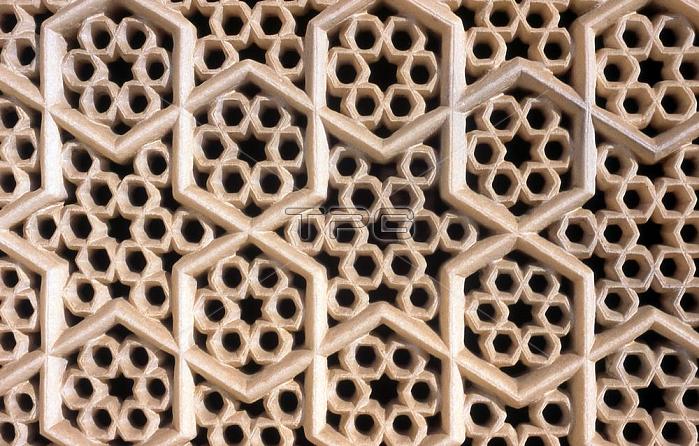
A jali (or jaali; Gujarati ????) is the term for a perforated stone or latticed screen; usually with an ornamental pattern constructed through the use of calligraphy and geometry. Early work was performed by carving into stone; while the later used by the Mughals employed the technique of inlay; using marble and semi-precious stones. Jali typically use Floral geometric patterns.
Etimad-ud-Daula's Tomb (Urdu: ?????? ?????? ?? ??????; I'timad-ud-Daulah ka Maqbara) is a Mughal mausoleum in the city of Agra in the Indian state of Uttar Pradesh.
Along with the main building; the structure consists of numerous outbuildings and gardens. The tomb; built between 1622 and 1628 represents a transition between the first phase of monumental Mughal architecture - primarily built from red sandstone with marble decorations; as in Humayun's Tomb in Delhi and Akbar's tomb in Sikandra - to its second phase; based on white marble and pietra dura inlay; most elegantly realized in the Taj Mahal.
The mausoleum was commissioned by Nur Jahan; the wife of Mughal emperor Jahangir; for her father Mirza Ghiyas Beg; originally a Persian Amir in exile; who had been given the title of I'timad-ud-Daulah (Pillar of the State). Mirza Ghiyas Beg was also the grandfather of Mumtaz Mahal (originally named Arjumand Bano; daughter of Asaf Khan); the wife of the emperor Shah Jahan; responsible for the construction of the Taj Mahal. Pictures From Asia David Henley
| px | px | dpi | = | cm | x | cm | = | MB |
Details
Creative#:
TOP19313419
Source:
達志影像
Authorization Type:
RM
Release Information:
須由TPG 完整授權
Model Release:
No
Property Release:
No
Right to Privacy:
No
Same folder images:

 Loading
Loading